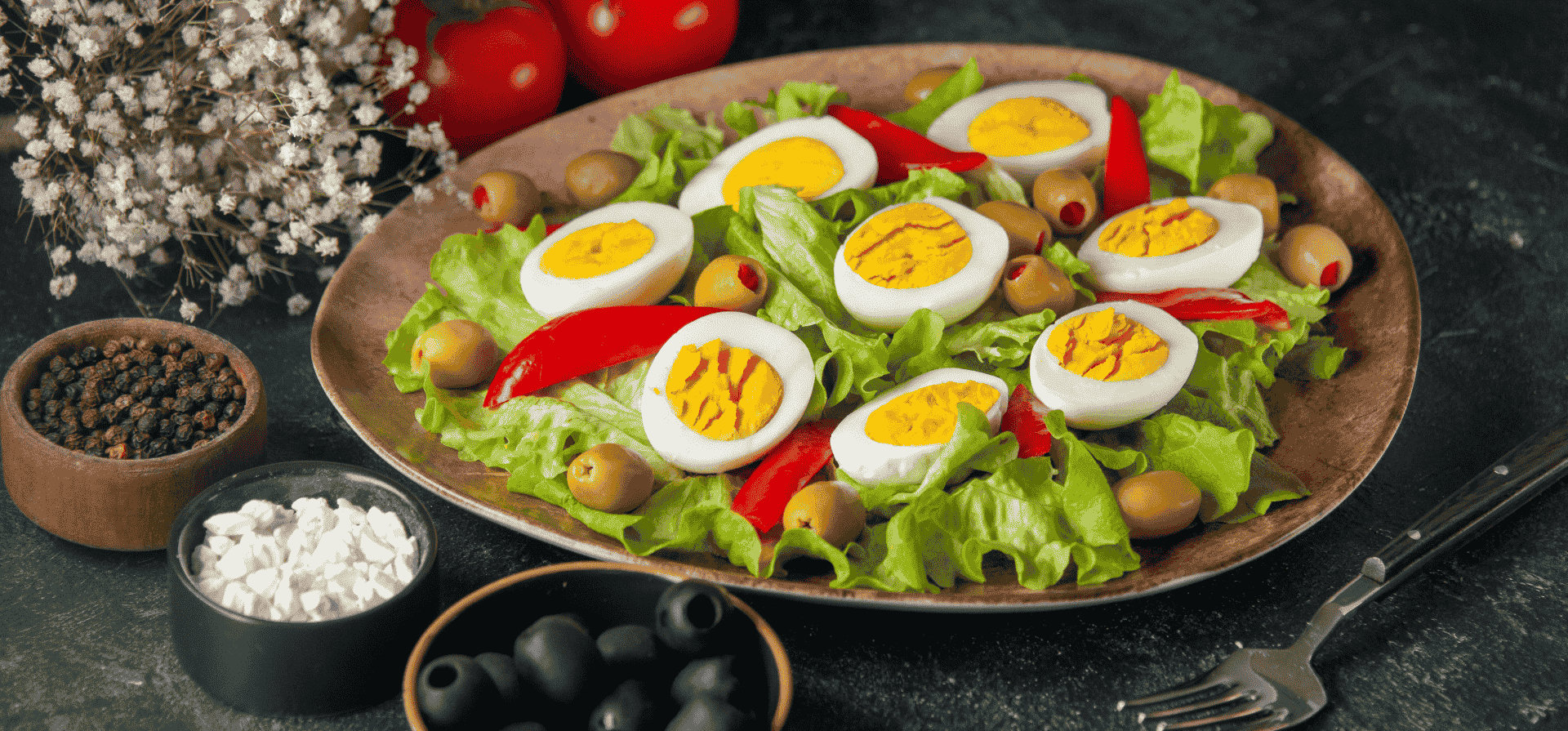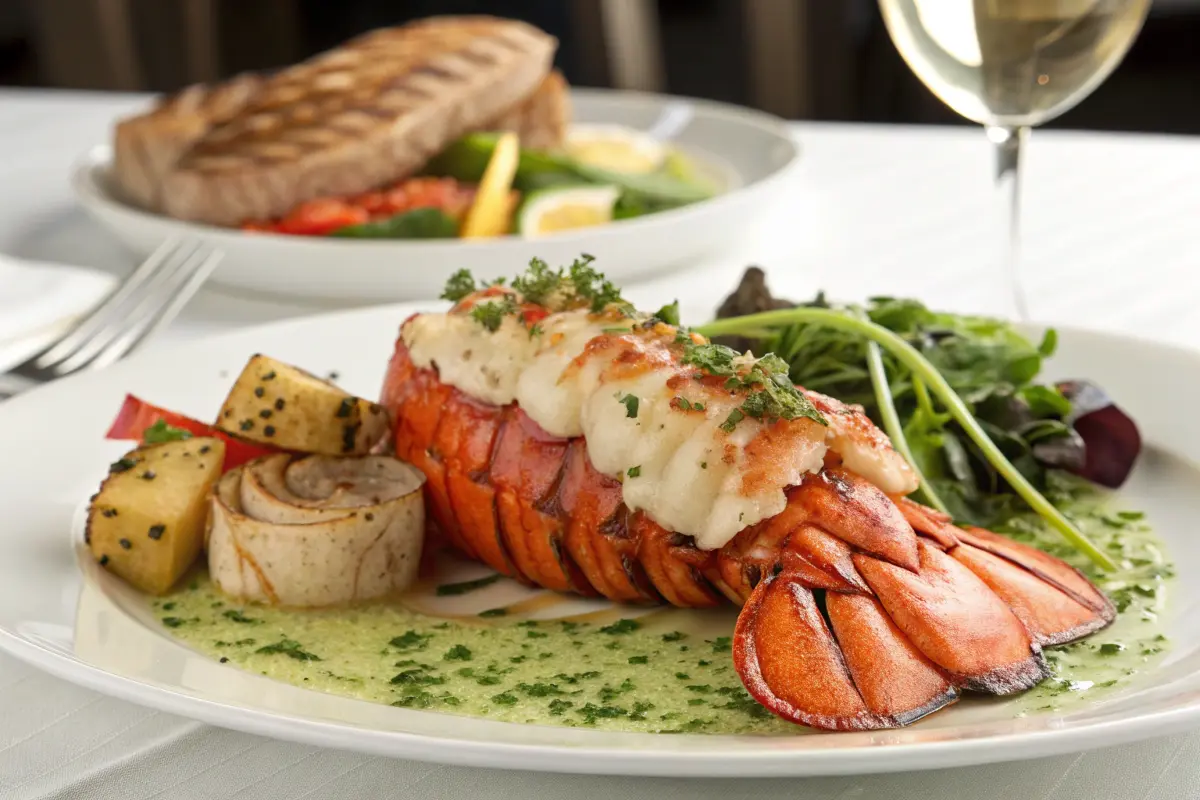Lobster Tails: Cooking Tips to Elevate This Luxurious Dish
Lobster tails are one of those luxurious treats that always seem to elevate any meal. Whether you’re preparing them for a special occasion, a romantic dinner, or simply craving something delicious, lobster tails are sure to impress. But there’s more to them than just cooking them up – from selecting the right lobster tail to enhancing its flavor with the perfect sauce, there’s plenty to explore. In this guide, we’ll dive into the different types of lobster tails, how to choose the best ones, preparation techniques, and some mouthwatering cooking methods. Plus, you’ll find tips on pairing lobster tails with sides and sauces to make your meal unforgettable.
Understanding Lobster Tails
What Are Lobster Tails?
A lobster tail is the segmented, rear portion of the lobster, where all the tender, juicy meat is housed. This part of the lobster is often prized for its rich flavor and is the most sought-after cut. While the whole lobster can be a bit tricky to deal with, the tail offers a much more convenient way to enjoy lobster without the mess of breaking apart the shell.
You can usually find lobster tails sold separately in the seafood section, making them perfect for a variety of recipes. Whether you’re grilling, broiling, or steaming, lobster tails make an elegant dish for any occasion.
Types of Lobster Tails
When it comes to choosing the best lobster tail, you’ll come across two main types: cold-water and warm-water lobster tails.
- Cold-water lobster tails: These are typically from lobsters that live in the colder, deeper waters of the Atlantic, like Maine lobster. These tails are known for their firm texture and sweet, succulent meat.
- Warm-water lobster tails: These come from spiny lobsters, which live in the warmer, shallower waters of the Caribbean and the Pacific. While they’re often a bit softer and less sweet than cold-water lobster tails, they can still provide a delicious eating experience, often at a more affordable price.
If you’re aiming for the best lobster tail experience, cold-water lobster is usually the go-to choice. However, both types can be cooked to perfection with the right techniques.
Nutritional Value
Lobster tails are not only delicious but also quite healthy. They’re low in fat and high in protein, making them an excellent choice for those looking for a nutritious seafood option. A typical 6 oz lobster tail contains around 20.5 grams of protein and just 1.5 grams of fat, making it a lean and heart-healthy protein source.
So, whether you’re enjoying it as part of a special meal or incorporating it into a lighter dish, lobster tails can fit nicely into a balanced diet.
Selecting the Perfect Lobster Tail
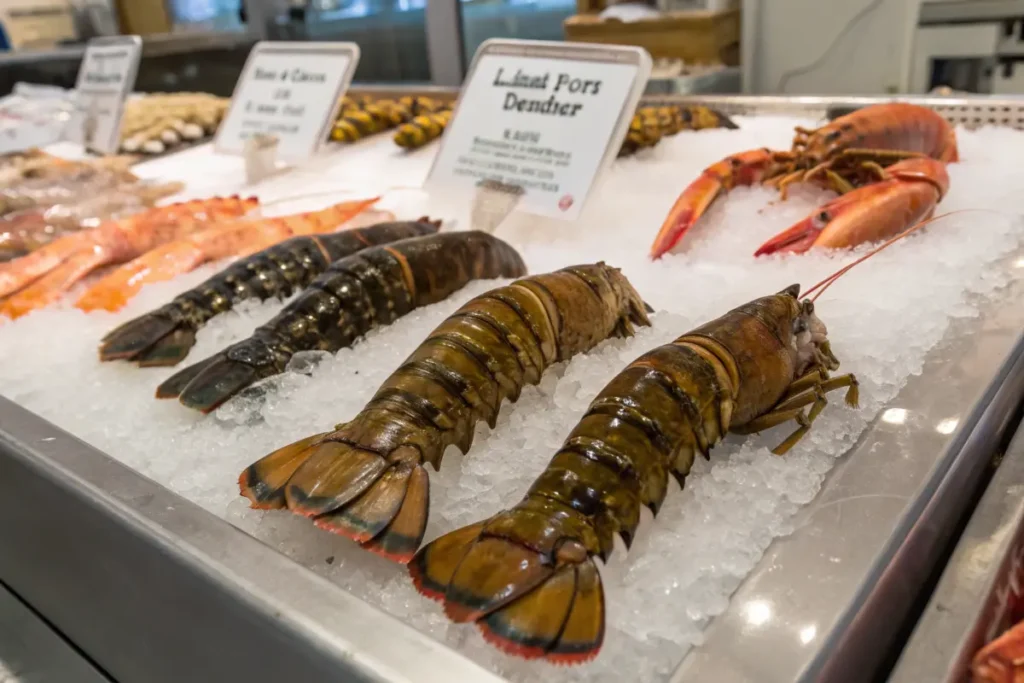
Fresh vs. Frozen Lobster Tails
When it comes to selecting lobster tails, you’ll typically find them in fresh or frozen options. While fresh lobster tails may seem more appealing, they’re often actually previously frozen, as freezing preserves their quality until they’re ready to be used. In fact, many lobster tails labeled as “fresh” have undergone a freezing process at some point.
If you opt for frozen lobster tails, don’t worry—properly frozen lobster is just as tasty as fresh. The key is to look for tails that are firm to the touch, with a slightly translucent appearance. Avoid any lobster tails that seem mushy or discolored, as these are signs that they’ve been improperly handled.
If you’re unsure, it’s always a good idea to ask your fishmonger about the lobster’s storage history. They can help guide you toward the best options for your meal.
Size Matters
Size is another crucial factor to consider when selecting lobster tails. Typically, lobster tails are sold by weight, ranging from about 3 oz to 10 oz or more. Larger lobster tails are often considered the most tender and flavorful. These bigger tails provide a meatier bite, perfect for showcasing their rich flavor. However, smaller lobster tails can be a more budget-friendly option and are still packed with great taste.
If you’re looking for something more indulgent or have a large gathering, larger lobster tails are an excellent choice. On the other hand, smaller lobster tails can be a perfect appetizer or a lighter main dish for an intimate meal.
Sustainable Sourcing
Sustainability is important when buying lobster tails. You’ll want to choose lobster tails that are responsibly sourced. This ensures that the lobsters are harvested in a way that protects their populations and the marine environment. Look for certifications like the Marine Stewardship Council (MSC) seal, which guarantees that the lobster was caught using sustainable fishing methods.
It’s always worth spending a little extra time researching where your lobster comes from. By choosing sustainable options, you contribute to preserving the ocean’s ecosystem for future generations.
Thawing and Preparing Lobster Tails
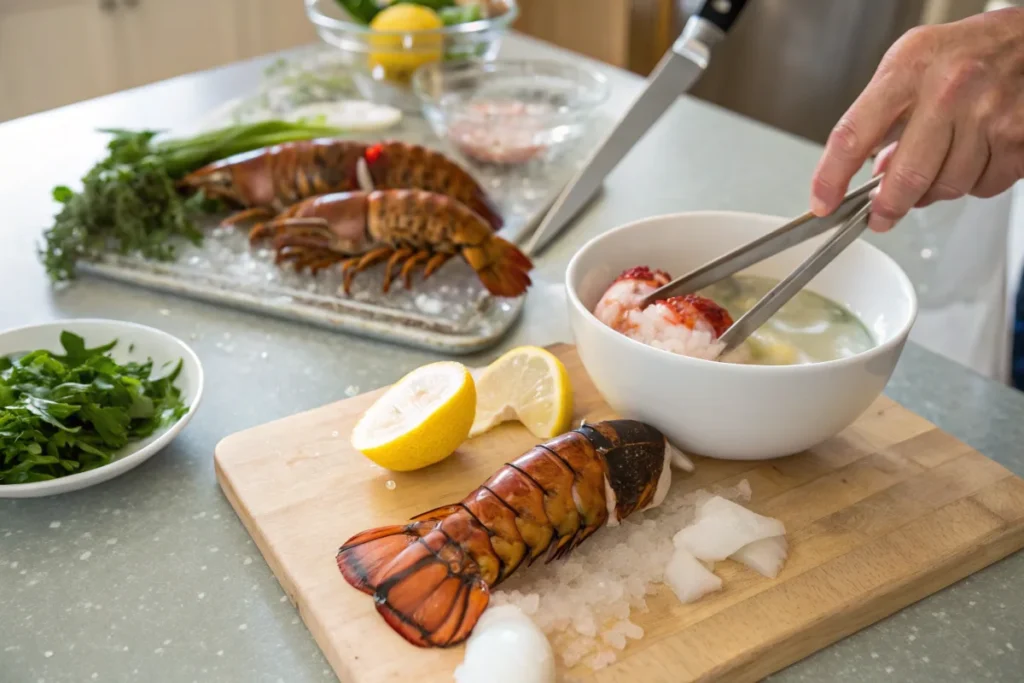
Thawing Methods
Whether you buy lobster tails fresh or frozen, proper thawing is crucial to achieve the best texture and flavor. If you’re working with frozen lobster tails, there are a couple of simple ways to thaw them.
The best method is to thaw your lobster tails overnight in the refrigerator. This method is slow and allows the lobster meat to thaw evenly, maintaining its delicate texture. If you’re short on time, you can also thaw them more quickly by placing the lobster tails in a sealed plastic bag and submerging them in cold water for 30-60 minutes. Be sure not to use hot water, as this can start cooking the lobster and affect the texture.
Avoid thawing lobster tails at room temperature, as this can lead to uneven thawing and compromise the meat’s quality.
Butterflying the Tail
Once your lobster tails are thawed, you’ll need to prepare them for cooking. One of the most popular techniques is butterflying the tail, which not only improves the presentation but also ensures even cooking.
To butterfly a lobster tail, start by placing the tail on a cutting board with the shell facing up. Using a sharp pair of kitchen shears, cut down the center of the shell, from the wide end to the tail fan. Once you’ve cut through the shell, carefully pull apart the shell to expose the lobster meat. Gently pull the meat up and rest it on top of the shell, leaving the fan of the tail intact.
Butterflying the tail will allow the lobster meat to cook more evenly, helping to avoid overcooking the edges while ensuring a juicy, tender center.
Removing the Vein
Before cooking, it’s important to remove the dark vein that runs along the lobster’s back. This vein is actually the lobster’s digestive tract and can have an unpleasant taste if left intact.
To remove the vein, simply make a small incision along the back of the lobster tail with a knife. Then, use a skewer or your fingers to gently lift out the vein. Be sure to discard it before cooking.
Once the vein is removed, your lobster tail is ready for cooking, ensuring the freshest, cleanest flavor possible.
It seems there was an issue retrieving the data from the website. However, I will continue writing the next parts of the article as per the guidelines you provided.
Cooking Methods for Lobster Tails

Grilling Lobster Tails
Grilling is one of the best ways to cook lobster tails, especially if you love that slightly smoky flavor. Start by preheating your grill to medium-high heat. While it’s heating up, brush your lobster tail meat with some melted butter and season with a pinch of salt and pepper. Once your grill is ready, place the lobster tails shell-side down on the grates and close the lid.
Grill the tails for about 5-6 minutes, then flip them over and grill for another 3-4 minutes. The meat should become opaque and firm to the touch. Make sure not to overcook, as lobster meat can turn rubbery when done too long. Grilling gives the lobster tail a slightly charred, flavorful exterior while keeping the meat tender and juicy inside.
Broiling Lobster Tails
Broiling is another fantastic cooking method that gives you perfectly cooked lobster tails. Begin by preheating your broiler on high. Place the lobster tails on a baking sheet and, just like grilling, brush the meat with garlic butter and season with your favorite spices. Broil the lobster tails about 10-12 minutes, depending on their size.
Keep a close eye on them, as broilers work quickly. You’ll know the lobster tail is ready when the meat turns opaque and slightly browned on top. This method works great for a quick, no-fuss lobster dinner with a crispy finish.
Baking Lobster Tails
If you prefer a more hands-off approach, baking lobster tails in the oven is a great method. Preheat your oven to 400°F (200°C). Place the prepared lobster tails on a baking sheet and brush them generously with melted butter. Bake the lobster tails for 10-12 minutes, or until the meat is fully cooked and opaque. You can add a squeeze of lemon juice or your favorite seasoning before baking to enhance the flavor.
Baking the lobster tail is a simple and effective way to cook lobster without worrying about flipping or checking the grill constantly. This method ensures even cooking, leaving you with juicy lobster every time.
Steaming Lobster Tails
Steaming is an excellent option for cooking lobster tails if you prefer a more delicate, tender texture. To steam lobster tails, fill a large pot with about an inch of water and bring it to a boil. Place the lobster tails in a steamer basket and cover the pot with a lid. Steam the lobster tails for about 8-10 minutes.
This method allows the lobster tails to cook in their own juices, preserving their natural flavor. Steamed lobster is incredibly tender and perfect for those who enjoy a more subtle taste.
Air Frying Lobster Tails
If you’re looking for a quicker cooking method, air frying is a great choice for lobster tails. Preheat your air fryer to 350°F (175°C). Place the lobster tails in the basket, brush with melted butter, and air fry for about 7-8 minutes. This method gives the lobster a crisp exterior while keeping the inside moist and flavorful.
Air frying offers a hassle-free way to cook lobster with minimal effort and time. It’s a great choice if you’re in a rush but still want to enjoy a delicious lobster tail.
Flavor Enhancements and Sauces
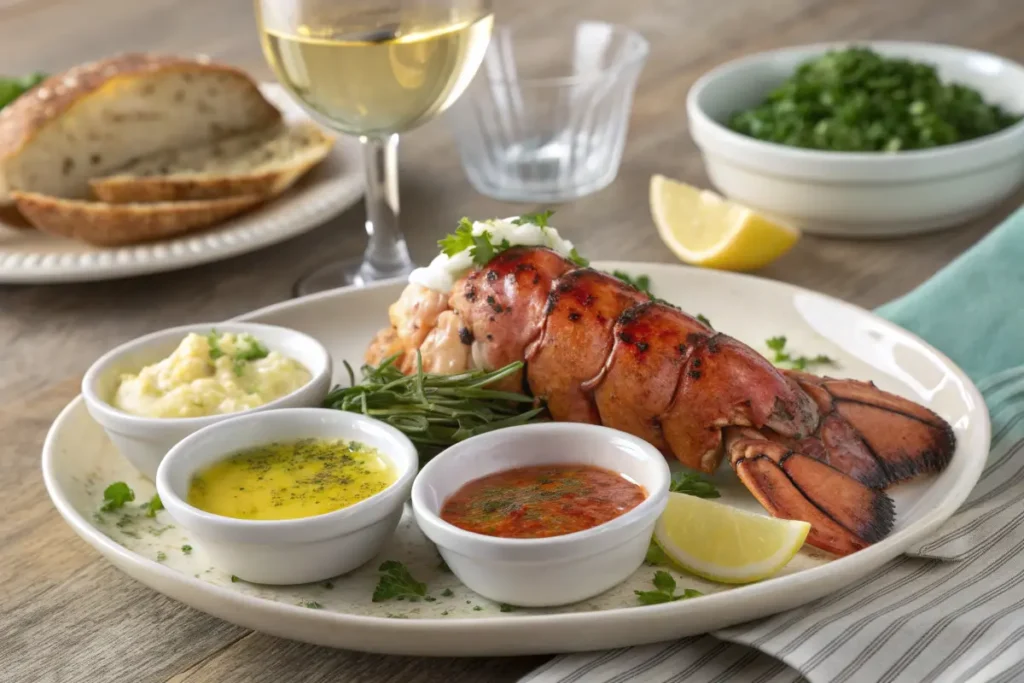
Classic Garlic Butter Sauce
No lobster tail is complete without a rich and flavorful dipping sauce. The classic garlic butter sauce is a fan favorite and complements the natural sweetness of the lobster meat perfectly. To make this sauce, melt butter in a small saucepan, then stir in minced garlic and cook for a minute until fragrant. Add a squeeze of fresh lemon juice, chopped parsley, and a pinch of salt to taste.
You can drizzle this garlic butter sauce over the lobster meat before serving or serve it on the side for dipping. The garlic and butter blend creates a savory, buttery sauce that elevates the lobster to new heights.
Lemon Herb Butter
For a refreshing twist on the classic butter sauce, try lemon herb butter. Mix melted butter with freshly chopped rosemary, thyme, and lemon zest. This sauce adds a fragrant and zesty kick to the rich lobster meat, balancing out the buttery goodness.
Lemon herb butter pairs wonderfully with lobster tails, adding a citrusy and aromatic flavor that makes each bite feel light yet satisfying.
Spicy Cajun Butter
If you love a bit of spice, consider making a spicy Cajun butter sauce. Combine melted butter with Cajun seasoning, paprika, and a dash of cayenne pepper. This flavorful sauce adds heat and smokiness to the lobster meat, making for an exciting and bold flavor profile.
For an even spicier kick, you can adjust the amount of cayenne or add some chopped fresh chili peppers. Cajun butter is perfect if you want to bring a little heat to your lobster tail experience.
Lobster Tail Dipping Sauces
You don’t have to stop at just one sauce! Lobster tails are versatile and can be paired with various dipping sauces to suit different tastes. Try pairing your lobster with a tangy mustard sauce, a rich hollandaise, or even a spicy aioli. These sauces complement the lobster meat and create different flavor experiences with each dip.
Pairing Lobster Tails with Side Dishes
Complementary Sides
When serving lobster tails, it’s important to have the right side dishes that enhance the rich, delicate flavor of the lobster without overpowering it. There are plenty of delicious options to choose from, but some of the best sides include garlic mashed potatoes, grilled vegetables, and fresh salads. For a creamy and comforting dish, mashed potatoes with a hint of garlic pair beautifully with the lobster, complementing its richness while offering a smooth contrast.
Grilled vegetables, such as asparagus, zucchini, or bell peppers, provide a slightly smoky flavor that works wonderfully with lobster. You can also serve a light, refreshing green salad with a simple vinaigrette to balance out the heaviness of the lobster tail.
Wine Pairings
To elevate your meal, a good wine pairing can really bring the dish together. Lobster tails pair best with white wines that enhance the sweetness of the meat. A crisp Chardonnay is a popular choice, as its buttery, oak flavors complement the richness of the lobster. Alternatively, a light Sauvignon Blanc, with its bright acidity, can provide a refreshing contrast to the lobster’s delicate flavor. If you prefer red wine, opt for a lighter Pinot Noir, which won’t overwhelm the subtle sweetness of the lobster.
Choosing the right wine ensures a balanced and harmonious dining experience that highlights the natural flavors of the lobster tail.
Common Mistakes to Avoid
Overcooking the Lobster
One of the most common mistakes when cooking lobster tails is overcooking them. Lobster meat is delicate and cooks quickly. If you leave it on the grill, in the broiler, or in the oven for too long, it can become rubbery and tough. To avoid this, pay close attention to cooking times. The lobster tail is ready when the meat turns opaque and the shell turns bright red. You can also use a meat thermometer, with an internal temperature of 135°F (57°C) being ideal for perfectly cooked lobster.
Underseasoning
Another mistake to watch out for is underseasoning. Lobster meat is naturally sweet, but it can be a bit bland without the right seasoning. Be sure to generously season the lobster tail with salt, pepper, and your choice of spices or herbs. A simple garlic butter sauce or a squeeze of fresh lemon juice can make all the difference in enhancing the flavor.
Improper Thawing
If you’re using frozen lobster tails, improper thawing can result in uneven cooking. It’s important to thaw them properly in the refrigerator overnight or under cold running water. Never thaw lobster tails at room temperature, as this can lead to bacterial growth and affect the texture and flavor.
By avoiding these common mistakes, you’ll ensure that your lobster tail comes out perfectly every time!
Frequently Asked Questions (FAQs)
How do I know when lobster tails are done?
One of the biggest concerns when cooking lobster tails is determining when they’re perfectly cooked. Luckily, it’s easier than you might think! Lobster tails are done when the meat turns opaque and firm to the touch. You can also use a thermometer to check the internal temperature—it should reach 135°F (57°C). If you’re grilling or broiling, keep an eye on the meat, as overcooking can make it tough and rubbery. The tail should be bright red and slightly curled when done.
Can I cook lobster tails from frozen?
Absolutely! You can cook lobster tails directly from frozen, which is especially convenient if you didn’t have time to thaw them. However, it’s essential to thaw them properly first for the best texture. You can thaw frozen lobster tails in the refrigerator overnight or by placing them under cold running water for about 30-60 minutes. Once thawed, you can cook them using your favorite method, such as grilling, broiling, or steaming.
What is the best way to store leftover lobster tails?
If you find yourself with leftover lobster tails, don’t worry! Simply store them in an airtight container and place them in the refrigerator. They should be eaten within 2 days for the best taste and texture. To reheat, gently warm the lobster in the oven or on a stovetop. Be careful not to overheat, as this can result in tough meat. If you’d like to store lobster tails for a longer period, you can freeze them for up to 3 months.
Can I eat the lobster shell?
No, the lobster shell is not edible. The shell serves as a protective covering for the lobster meat and is discarded after cooking. Only the meat inside the lobster tail, claws, and body is consumed. After preparing your lobster tail, be sure to remove the shell and any veins before enjoying the tender lobster meat inside.
Conclusion
In conclusion, lobster tails are a true delicacy that can transform any meal into something extraordinary. Whether you’re grilling, broiling, baking, or steaming, there are countless ways to prepare this luxurious seafood. With the right techniques and a little care, you can ensure that your lobster tails are always tender, flavorful, and perfectly cooked.
From understanding the different types of lobster tails and selecting the best ones, to enhancing their taste with savory butter sauces and pairing them with complementary side dishes, this guide has covered everything you need to know. By avoiding common mistakes and following expert tips, you’ll be able to enjoy lobster tails that are restaurant-quality in the comfort of your own home.
So, next time you’re looking to impress your guests or indulge in a special meal, remember this guide and cook your lobster tails to perfection. With a little practice and a few key tips, you’ll be serving up this elegant dish like a pro! Happy cooking!

